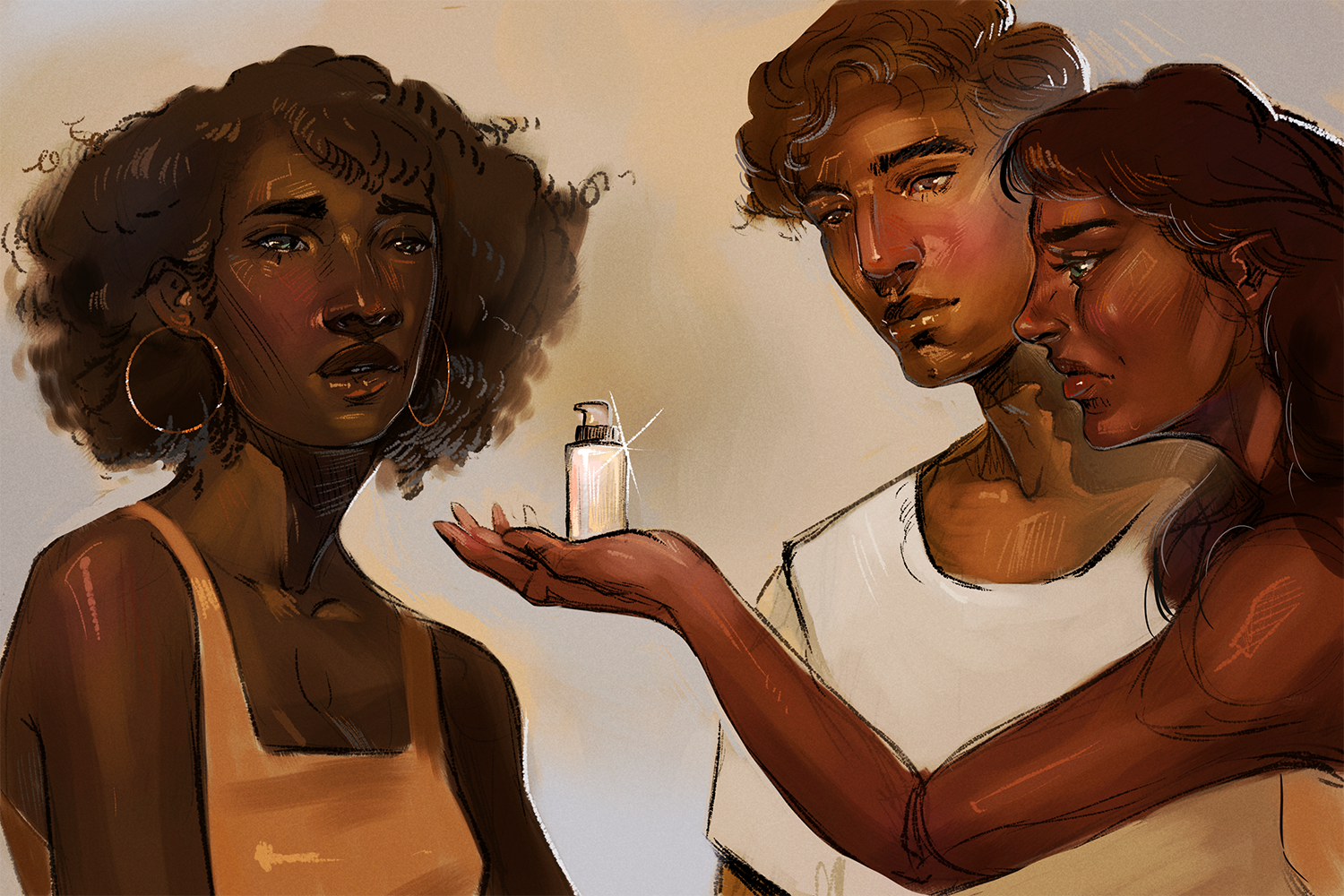Last year was the year of inclusivity with Fenty Beauty producing products to match deeper, darker skin tones and kick-starting a new wave: “The Fenty Effect.” People of color should not have to choose from only a handful of inclusive brands; and, as cosmetic history shows, most products sold on shelves only cater to the majority. It’s a concept that’s been ingrained into the fabric of history for centuries.
Historical figures with lighter complexions such as Queen Victoria, Marie Antoinette and Catherine de Medici were equated with youth, fertility and status. This created a trend called “peaches and cream” in which the skin was pale as paper and the cheeks and lips as rouge as blood. Anyone who was incapable of achieving that look was labeled as less than.
The ability to shop from multiple brands creates the feeling of being at a “higher status.” As someone with dark skin, when I find my shade of higher end foundation and am able to rave about the product, I find satisfaction. The prestige of these products comes from their exclusiveness, but that exclusivity needs to be left in the price point and not in the skin tone.
People of color shouldn’t have to compromise and mix foundations shades in order to make something work for them. There shouldn’t be any work involved at all actually. For the longest time, people of color have had to work harder in order to achieve what they want. Let’s draw the line at cosmetics.
The $60 price point for high-end cosmetics pays for the packaging and the brand, not just the product itself. People of color should be tired of only choosing from products that come in basic black or neutral colored packaging and only contain “afro-friendly” ingredients like cocoa butter, shea butter and olive oil. Not that there’s anything wrong with those ingredients, but let’s have some variety. We want the luxury ingredients like pearls and caviar and not just the ingredients you can buy raw. It’s almost as if these makeup brands are subliminally telling consumers of color that we don’t deserve the expensive ingredients based on economic, racial stereotypes.
Brands like Tarte increased their shade ranges 3 or 4 darker hues as a minimal attempt to please the minority. However, it still has a negative connotation as if to say, “We increased our shade range. Are you happy now?” The real question is: Are these companies doing this to please the consumer because they genuinely care or are they only doing this to be a part of a movement and for the reputation?
Recently, Morphe cosmetics came out with new complexion products in the foundation, concealer and powder categories with various shades from fair to deep. Going back to the idea of “The Fenty Effect,” Morphe released 60 shades of foundation, 10 more than Rihanna has in her line. Morphe may feel like they took the cake with the number of foundations in their initial launch, but only releasing 24 shades of concealer in addition? What happened to the rest of the 36 concealer shades unaccounted for?
Although there was a vast array of skin tones, the true tea lies within the deeper shade ranges and their undertones. For some reason, rich and deep equate to red, as if that’s the only undertone that exists within melanated boys and girls. Not only this but the foundation causes a grey cast to show up after minutes of wear, which makes the skin look ashy.
If you know Morphe then you know that they’re a brand built on the reputation and hype around their brushes and affordable, yet pigmented eyeshadows. Just like other brands, they expanded into lip, lashes and now, their newest launch. When you find something you’re good at, don’t stray away from what’s working for you and then epically fail in the process. By hopping on this bandwagon of “inclusion,” this company and others alike are on the route to further injustice. All undertones and shades are not created equal. Deep is not deep and neutral isn’t neutral if the base within the product is not accurate.
Thank you, Rihanna, for opening the eyes and minds of consumers and cosmetic companies, who think that beauty lies within the complexion shades on the left side of the color spectrum. To all of the brands who are thinking of including people of color, you have a lot to prove. And, if you want to thrive in this business, do some thorough research on the consumer and stop producing half-assed products that compromise quality just to one-up competitors.
Written by Morgan Daniel
Graphic by Nathanael Ozburn

